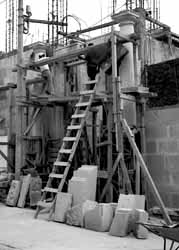|
[Pattern Language, Repeatability, Life as Art]
- “The media have substituted themselves for the older world. Even if we should wish to recover that older world we can do it only by an intensive study of the ways in which the media
have swallowed it.” (McLuhan, quoted in On Photography by Susan Sontag.)
 “Any technology tends to create a new human
environment… Technological environments are not merely passive containers of people but are active processes that reshape people and other technologies alike. In our time
the sudden shift from the mechanical technology of the wheel to the technology of electric circuitry represents one of the major shifts of all historical time. Printing from
movable types created a quite unexpected new environment—it created the public. Manuscript technology did not have the intensity or power of extension necessary to create publics on a national scale. What we have called
“nations” in recent centuries did not, and could not, precede the advent of Gutenberg technology any more than they can survive the advent of electric circuitry with its power of totally involving all
people in all other people.” (Marshall McLuhan, The Gutenberg Galaxy, p. 7.) “Any technology tends to create a new human
environment… Technological environments are not merely passive containers of people but are active processes that reshape people and other technologies alike. In our time
the sudden shift from the mechanical technology of the wheel to the technology of electric circuitry represents one of the major shifts of all historical time. Printing from
movable types created a quite unexpected new environment—it created the public. Manuscript technology did not have the intensity or power of extension necessary to create publics on a national scale. What we have called
“nations” in recent centuries did not, and could not, precede the advent of Gutenberg technology any more than they can survive the advent of electric circuitry with its power of totally involving all
people in all other people.” (Marshall McLuhan, The Gutenberg Galaxy, p. 7.)- “The restructuring of human work and association was shaped by the technique of fragmentation that is the essence of machine technology. The essence of automation
technology is the opposite. It is integral and decentralist in depth, just as the machine was fragmentary, centralist, and superficial in its patterning of human relationships.” (Marshall McLuhan, Understanding Media, p. 23.)
- “The effects of technology do not occur at the level of opinions or concepts, but alter
sense ratios or patterns of perception steadily and without any resistance. The serious artist is the only person able to encounter technology with impunity, just because he is
an expert aware of the changes in sense perception.” (ibid., p. 33.)
- “The extreme bias and distortion of our sense-lives by our technology would seem to be a fact that we prefer to ignore in our daily lives. (McLuhan, Understanding Media,
p. 172)
- “This now brings us to the factual core of the “pseudoevent,” a label applied to the
new media, in general, because of their power to give new patterns to our lives by acceleration of older patterns. It is necessary to reflect that this same insidious power
was once felt in the old media, including languages. All media exist to invest our lives with artificial perception and arbitrary values. All meaning alters with acceleration,
because all patterns of personal and political interdependence change with any acceleration of information.” (ibid., pp. 178-179)
- “To understand the medium of the photograph is quite impossible…without grasping its
relations to other media, both old and new. For media, as extensions of our physical and nervous systems, constitute a world of biochemical interactions that must ever seek
new equilibrium as new extensions occur. In America, people can tolerate their images in mirror or photo, but they are made uncomfortable by the recorded sound of their
own voices. The photo and visual worlds are secure areas of anesthesia.” (ibid., p. 181)
|
|

